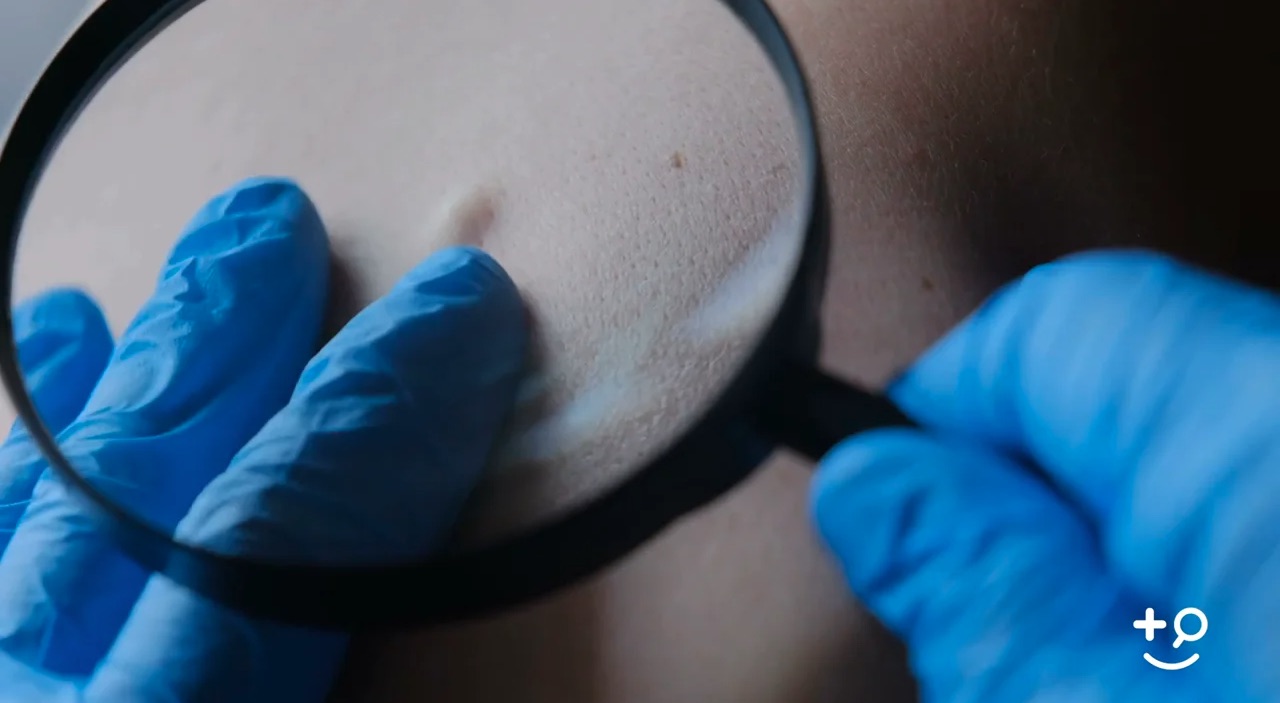According to The Skin Cancer Foundation one in five Americans will develop skin cancer by the age of 70. In support of May’s Skin Cancer Awareness Month, Dr. Samantha Schneider, M.D sits down with us to talk about America’s most common cancer.
Provider highlight: Dr. Schneideris a board-certified dermatologist and fellowship-trained Mohs surgeon specializing in Mohs micrographic surgery, facial reconstruction associated to skin cancer removal, and medical dermatology. Her expertise extends to pediatric dermatology and treating pigmentary disorders as well as cosmetic dermatology, including injectables such as neurotoxins and soft tissue fillers. Dr. Schneider sees patients at Skin Cancer & Dermatology Institute’s Carson location.
Q: What is skin cancer?
A: Skin cancer occurs when normal cells that make up the layers of the skin, develop mutations – typically from ultraviolet (UV) radiation that we get from the sun. When we are younger, our cells are more easily able to repair the damage, but as we age the machinery that repairs our cells has aged with us and does not always work as well. When these errors in our cell’s DNA cannot be repaired, the cells become abnormal, growing more quickly than they normally would and behave differently than their normal counterparts. This leads to skin cancer.
Q: What does skin cancer look like?
A: Skin cancer can look like many different things, which is why it is so important to see a board-certified dermatologist for full skin exams on a regular basis. Especially when you notice anything new that is changing, growing, or bleeding. Skin cancer can look like anything, from a red area with some flaking, to bumps that grow out from the skin’s surface and bleed easily, to dark or black flat lesions.
Q: What should I be looking for to help detect skin cancer?
A: Believe it or not, patients are great at detecting their own skin cancers. That is because you know your skin better than anyone else. To proactively help detect skin cancer, perform regular self-exams. Check your skin (all of yourself, even in those places where you don’t think the sun can reach) over regular time intervals – like once a month. When you do this regularly, you start to know where your normal moles and growths are, so then if a new one was to appear, or one of your older spots starts to change, your eye will notice the change. Anytime you note any lesions on your body that you don’t recognize, you should have them checked by a board-certified dermatologist to make sure that nothing funny is going on.
Q: Who is more at risk for skin cancer?
A: Generally speaking, patients with fairer skin, blonde hair, and blue eyes are at higher risk for skin cancers. There are some types of skin cancers that can run in families, making patients with certain genetic predispositions more likely to develop skin cancer. For those of us living in the higher altitudes of the Reno-Tahoe area, where we enjoy more than 300 days of sun per year, we will have more exposure to UV radiation. That can increase our risk of skin cancer.
Q: How is skin cancer treated?
A: There are many ways to treat skin cancers depending on the type of the cancer and its location/s. Treatment options include certain chemotherapy or immunomodulating creams, photodynamic therapy (where you have a medication applied and sit underneath a light to activate it), electrodessication and curettage (scrape and burn), excisions, and even Mohs micrographic surgery– to name a few. Because there are so many options and each patient and each tumor are unique, it is important to discuss your options with your board-certified dermatologist.
Q: What is Mohs micrographic surgery?
A: Mohs micrographic surgery is a surgical technique developed by an American physician and general surgeon named Frederic E. Mohs. The surgical technique involves removing a circular piece of tissue around the biopsy site (usually a few millimeters around the scar in every direction) and making frozen tissue slides, while you wait in the office. The process of making the slides can take about an hour, after which your Mohs micrographic surgeon then reads the slides. The Mohs surgeon looks at the entire edge of the section and everything underneath. If the cancer is all gone, the surgeon stops removing tissue and discusses options for repairing the wound. If there is any cancer left, the surgeon returns to that precise location and removes more tissue. Think of it like a Reece’s peanut butter cup. If you were to flatten the cup onto a slide, you want to see only chocolate for it to be clear. If there’s any peanut butter visible, then there’s still cancer left, and you need to remove another layer.
Q: What does a full skin exam with a dermatologist entail?
A: During a full skin exam, your dermatologist will look at all of your skin – from your scalp all the way to the web spaces on your fingers and toes. It is important to allow your doctor to look everywhere because people can develop skin cancer anywhere. Even if you see an Ob-gyn, a urologist, or another doctor who sees the skin underneath your undergarments, they are not necessarily looking at the skin with the same level of detail that a board-certified dermatologist is trained to.
America’s most common cancer is also one of the most preventable forms of cancer – this month, as well every month of the year, Skin Cancer & Dermatology Institute invites its community to unite against skin cancer.
Get to know Skin Cancer & Dermatology Institute, and learn more about medical dermatology, Mohs surgery, and cosmetic surgery at SkinCancerDerm.com. Appointments may be made online or by calling 775.324.0699.
 Back to Blog Homepage
Back to Blog Homepage